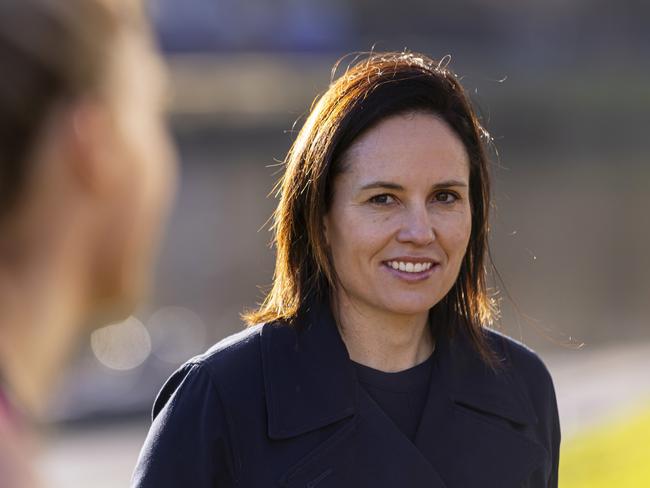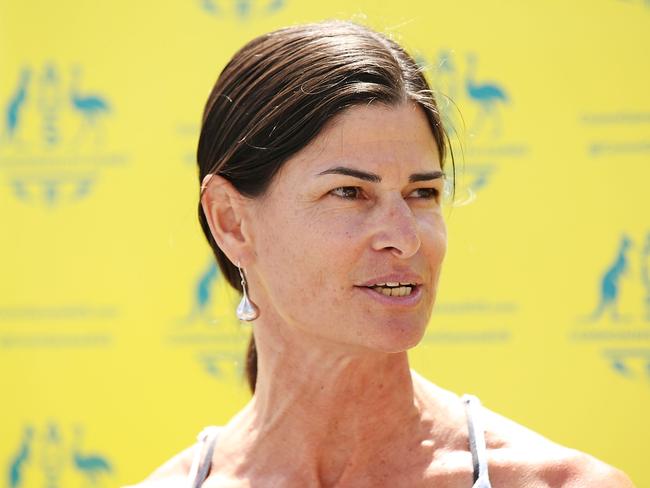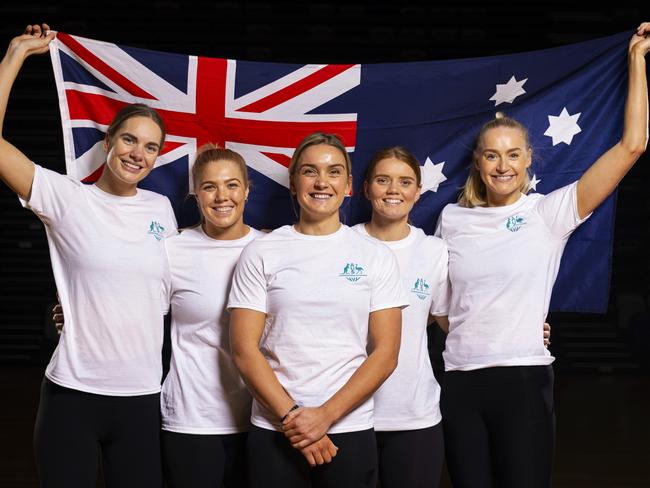Super Netball contract saga: Collective Player Agreement explained, why can’t clubs sign players?
Wondering why Super Netball clubs can’t sign players for next season now the World Cup is over and the eighth team named? The collective player agreement saga explained.
Netball
Don't miss out on the headlines from Netball. Followed categories will be added to My News.
It’s regarded as the best professional league in the world but Super Netball will be a competition without players in just five weeks’ time if negotiations continue to stall around key team and player agreements.
While Craig Hutchison’s SEN has officially won the licence for the eighth team, to replace the now-defunct Collingwood Magpies, from next season, the other seven teams in the league still have not signed Team Participation Agreements (TPAs) to renew their licences until the end of the next broadcast cycle in 2026.
Without that done, players cannot be signed, even if the Collective Player Agreement (CPA) is agreed upon.
So what are the TPA and CPA and why is agreement taking so long?

TEAM PARTICIPATION AGREEMENTS (TPAs)
These are the conditions under which each club agrees to, to take part in the competition.
While the Super Netball licences themselves are not up for renewal each time the TPA expires, teams have to agree to terms under which those licences are held.
Netball Australia and Super Netball club chief executives are locked in these discussions which must also be concluded before any player can be contracted.
As part of its licence, the SEN Southeast Melbourne franchise has agreed to TPA terms but the other seven clubs are yet to sign.
WHAT IS THE STICKING POINT?
The length of the deal is one point – clubs are arguing for long-term agreements, if not deals in perpetuity – rather than having to come back to the table every couple of years to tic-tack over details that have been agreed on over and again since the foundation of Super Netball in 2017.
Money is another – isn’t it always?
Clubs currently receive grants to cover player payments but NA and club CEOs continue to negotiate over the total payments and what they will cover.
While clubs are currently able to have non-binding conversations with prospective players for next season, they cannot sign anyone until both the TPA and CPA are finalised.

COLLECTIVE PLAYER AGREEMENT
The Australian Netball Players Association (ANPA), through its chief executive, former Diamonds captain Kathryn Harby-Williams, president and Vixens defender Jo Weston and a player executive is continuing discussions with Netball Australia on the terms and conditions of player contracts.
While the salary cap is the most often mentioned of these, the agreement also includes details such as overall player numbers, insurance, welfare and commercial deals.
The CPA will determine overall salary provisions for the league, the cap for each club, minimum wage for players and any pay rises for the life of the deal.
WHAT IS THE STICKING POINT?
The players want a partnership in which they share in any new money coming into the sport that can be shown to be player-driven Super Netball revenue.
Their argument, as is common for athletes across a raft of professional codes, is that their talent and performances help drive the growth and promotion of the sport and if the competition benefits commercially from that, they deserve a share.
As an organisation $4.1m in debt though, Netball Australia says it cannot afford to send any more money the way of players, with debt reduction not only its priority, but its duty to ensure the sport exits its perilous financial position.
The two ideas should not be mutually exclusive. But it seems an issue on which there has been little to no movement and the extent to which this will happen over the next five weeks will be fascinating.

PLAYER POOL
It’s not the only sticking point though. Australia remains the no. 1 team in the world and the Diamonds have regained the Commonwealth Games gold medal and World Cup in the past 18 months, underlining its position as netball’s top team.
But there’s little chance for growth or new blood in a competition for which expansion has been ruled out until the end of this broadcast cycle.
If there are no new teams, players argue there must be another means for growth and the idea of rookie contracts – floated during the last round of negotiations in 2021 – are on the agenda again to ensure a pathway from the state leagues to the world’s best competition.
With just 80 full-time contracts under current arrangements, as well as no limit on the number of internationals able to play in the competition, pushing into the league is no mean feat for new talent.
WHY IS IT TAKING SO LONG?
Netball Australia is meeting with both ANPA (CPA) and club CEOs (TPAs) but negotiations seem to have reached a stalemate, with suggestions from each camp the other is refusing to budge on their position.
Among the player concerns is the length of the agreement. Netball Australia wants the CPA to run until the end of the current broadcast deal, which covers the next three seasons but there remain tensions with the players unless they feel a genuine partnership has been entered into.
One thing is for sure – no one would be looking forward to heading back to the negotiating table again in 12 months given the protracted and at-times poisonous talks over the past 18 months.
WHAT IS THE SOLUTION?
ANPA and NA representatives need to lock themselves in a room and get this deal done.
With just weeks until the current contracts run out – and players cease being paid or have insurance cover – there is an urgency to get this done.
The players won’t just roll over though. If NA has any thoughts of waiting them out in some perverted game of chicken, the players are not about to blink.
They not only know their worth, the mood around women’s sport at the moment and action of other teams around them, such as the Wallaroos’ recent missives directed at Rugby Australia, have only underlined to players that they have the power to stand up for what they believe in.
It won’t necessarily get them what they want.
But the ball is in Netball Australia’s court to deal with a playing group that will not yield easily.
Originally published as Super Netball contract saga: Collective Player Agreement explained, why can’t clubs sign players?


